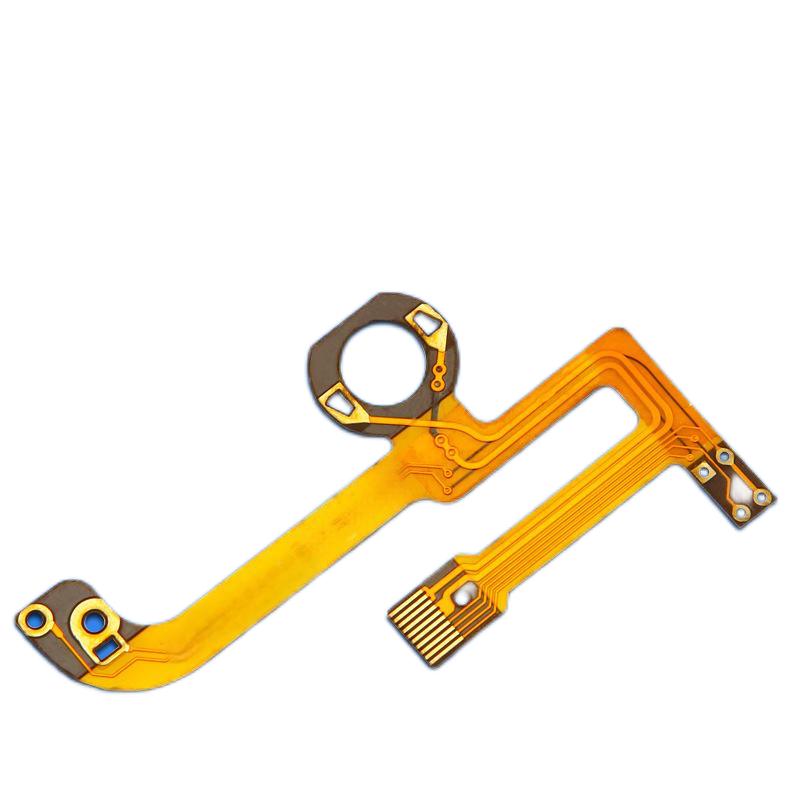Search
Coverlay Materials for FPC: Types, Differences, and Application Scenarios
- Dec 19,2024
-
Share
In the sophisticated realm of Flexible Printed Circuits (FPCs), the selection of appropriate coverlay materials is of paramount significance as it exerts a direct and profound influence on the performance, reliability, and durability of the circuitry. Shenzhen Huaruixin Electronics Co., Ltd., a preeminent and highly proficient manufacturer and vendor of FPCs with a wealth of accrued experience, is deeply immersed in the minutiae of these materials. Let's embark on an in-depth exploration of the prevalent coverlay materials, their similarities, disparities, and diverse application scenarios.

1. Polyimide (PI) Coverlay
PI stands as a ubiquitously employed coverlay material within the FPC domain. It is renowned for its exceptional thermal stability, capable of withstanding an extensive thermal gamut spanning from - 200℃ to +300℃. This remarkable attribute renders it eminently suitable for applications wherein the FPC might be subjected to elevated thermal regimens, such as in automotive engine control systems or industrial equipment in close proximity to heat sources. For example, in the thermally taxing environment of an automotive engine compartment, the FPC, fortified with a PI coverlay, can effectively shield the circuitry from the intense heat dissipated by the engine, thereby safeguarding the integrity and functionality of the electrical pathways. PI also exhibits excellent chemical resistance, acting as a stalwart bulwark against a panoply of chemicals and solvents. It possesses a relatively high mechanical strength, which is instrumental in safeguarding the underlying copper traces from physical damage during handling, installation, and operational use. In high-power density FPCs used in power electronics modules, the PI coverlay helps maintain the structural integrity of the circuit even under the combined stress of heat and mechanical forces.
2. Polyester (PET) Coverlay
PET coverlay presents an alternative option. It is characterized by a more favorable cost-effectiveness profile in comparison to PI. PET exhibits a certain degree of flexibility and optical transparency, which can confer a distinct advantage in specific applications. For instance, in certain consumer electronics where a modicum of light transmission is requisite through the FPC or where cost containment is a preponderant concern, such as in basic calculators or uncomplicated electronic toys, PET coverlay can be judiciously deployed. However, its thermal stability is comparatively inferior to that of PI, with a maximum continuous use temperature hovering around 120℃. Consequently, it is ill-suited for high-temperature milieus. In some low-power and low-frequency FPCs for simple sensor connections in consumer products, the PET coverlay can provide sufficient protection while keeping costs in check.
3. Similarities and Differences
4. Application Scenarios

Let’s talk! We’ll provide the perfect solution for you!
-
 Huaruixin Electronics mainly produces printed circuit boards as the core business, to provide customers with one-stop solutions for FPC/PCB production, components sourcing and Assembly.
Huaruixin Electronics mainly produces printed circuit boards as the core business, to provide customers with one-stop solutions for FPC/PCB production, components sourcing and Assembly. - WHAT WE DO — PCB Design Solutions — Flex PCB Production — Components Sourcing — FPC&PCB Assembly
- PRODUCTS — Single Sided Flexible Circuits — Double Sided Flexible Circuits — Multilayer Flexible Cirucits — Rigid-Flex Circuits — FPC Assembly — PCB Assembly
- CAPABILITY — FPC Capability — Rigid-Flex Capability — PCB Capability — Assembly Capability
- Copyright © 2024 Shenzhen Huaruixin Electronics Co., Ltd. All Rights Reserved.
- Design By BONTOP


